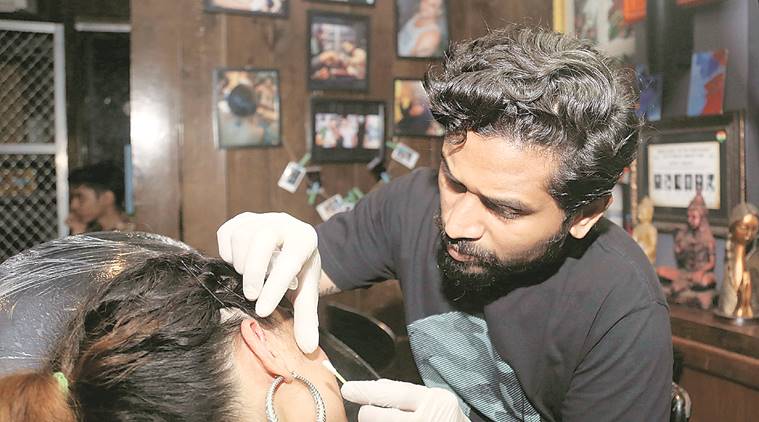 Vikas Malani at work. (Express Photo by Dilip Kagda)
Vikas Malani at work. (Express Photo by Dilip Kagda)
Written by Rachel Mucha
VIKAS MALANI (37) performs between five and 15 piercings per day. While he started with simple piercings on the ear, nose and septum, Malani can now perform over 2,000 piercings — over 30 on the ear alone. His catalog of offerings, which comprises “traditional, punk, gothic, cultural, and cu” piercings, has recently seen the addition of dermal and genital piercings.
Malani, who developed an interest in body painting during his high school years in Mumbai, was motivated to become a piercing artist during his travels across Europe and the US where he worked as an apprentice in tattoo and piercing parlors. He apprenticed with an expert piercer on the Lower East Side of New York City before moving back to India in 2004 to open his own studio, BodyCanvas. An important aspect of Malani’s job is ensuring that his studio is safe and hygienic. “In India, people consider piercing more of a goldsmith job. I realised that it was so important to be healthy and safe…” Unlike many goldsmith piercers, Malani uses highly sterile equipment, ensures the one-time use of needles, and his forceps and other tools match industry hygiene standards.
Malani insists that “piercing is a science” and that as an artist, one must “understand the human body anatomically.” One manifestation of Malani’s belief in anatomical precision is his exclusive use of needles rather than piercing guns.
During an appointment, Malani first asks his client why they want go for piercing. This allows him to develop a rapport with the client. He also does some initial safety checks, making sure that the client has eaten and was not under the influence of drugs or alcohol. Once the piercing is underway, Malani tries his best to “make them laugh, get them comfortable, because otherwise they wont be able to let me touch them”. Malani attracts clientele mostly through word of mouth. Many Bollywood stars and cricketers are now his clients. He most commonly performs ear, nose and septum piercings, costing about Rs 1,500. However, piercings that take longer and require finer skills — dermal piercings along spine, for example — could cost as much as $ 10,000. Malani believes that the Indian market for piercing is diversifying and growing, albeit slowly. Recently, he has observed an increase in requests for more rebellious piercings. Eyebrow piercings, for instance, are becoming more popular, especially in the LGBTQ community. A growing number of women have also begun to pierce diamond-laden studs on to their ring fingers.
Malani’s advice for those considering going under the needle? “It is always advisable that you go to a professional studio… which has more experience.they exist because they are good.”